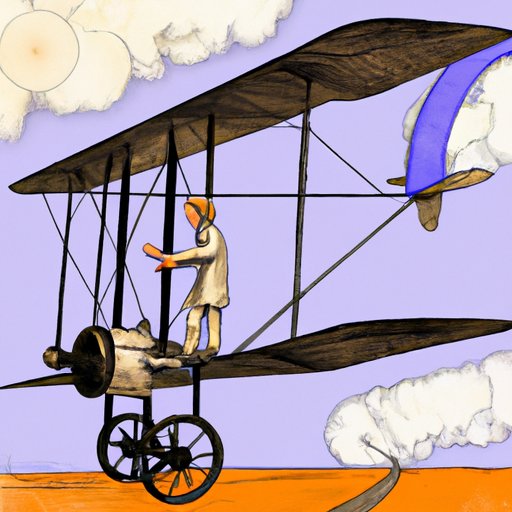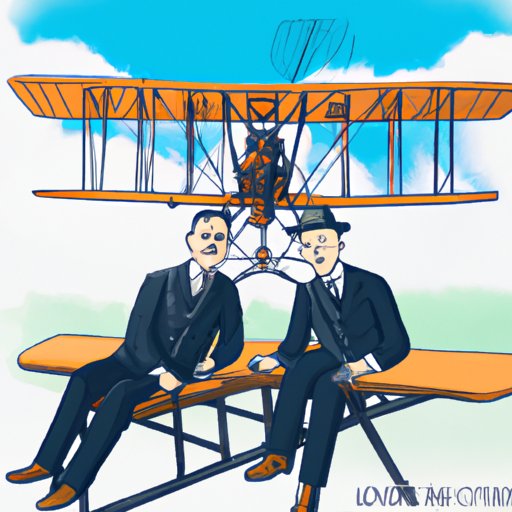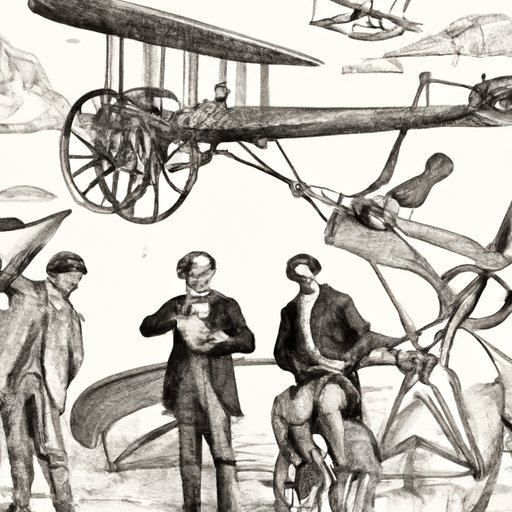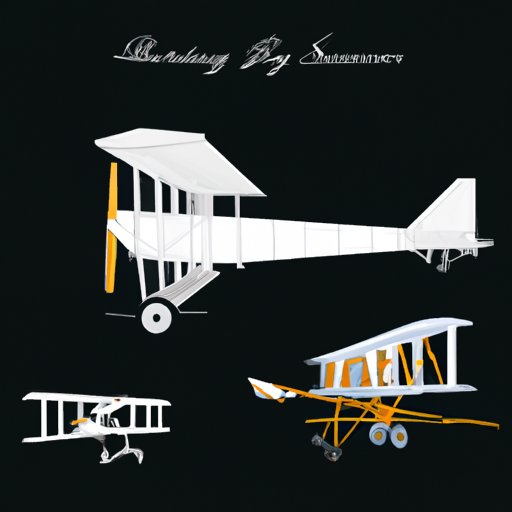Introduction
An airplane is a powered aircraft that is capable of sustained flight through the use of airfoils and propulsion systems. While it is difficult to determine when the first airplane was invented, it is generally accepted that the Wright brothers were the first to successfully fly a powered, heavier-than-air machine in 1903. In this article, we will explore the history and impact of the invention of the airplane.

A Historical Perspective on the Invention of the Airplane
Throughout history, people have been fascinated with the idea of flight. Early efforts to create flying machines included Leonardo da Vinci’s ornithopter designs, as well as various gliders and hot air balloons. However, it wasn’t until the late 19th century that two American brothers – Wilbur and Orville Wright – would make history by inventing the world’s first successful airplane.
Wilbur and Orville Wright were bicycle mechanics from Dayton, Ohio. After becoming interested in the idea of manned flight, they began to experiment with aeronautics in 1899. They conducted extensive research on the subject by reading books and magazines, and conducting their own experiments with kites and gliders. In 1903, the brothers made history with the first successful powered, heavier-than-air flight.

How Wilbur and Orville Wright Changed the World with their Invention
The invention of the airplane had a profound effect on industry and transportation. It allowed for greater access to remote areas, as well as faster transportation between cities. The invention also opened up new opportunities for trade and commerce, as goods could now be quickly transported across the globe. Additionally, the airplane has had a major impact on the military, allowing for quicker deployment of troops and supplies.
The Wright brothers’ invention marked the start of modern aviation. Since then, airplanes have become faster, larger, and more efficient. Today, airplanes are used for a variety of purposes, including passenger and cargo transportation, aerial photography, crop dusting, and even space exploration.
Exploring the Technical Aspects Behind the Invention of the Airplane
In order to understand how the Wright brothers developed their invention, it is important to look at the technical aspects of their design. The brothers designed the first practical airplane by using a system of wings, propellers, and a lightweight gasoline engine. This combination of components allowed the airplane to generate lift and propel itself forward.
The brothers also made significant advances in aeronautical engineering. They developed the three-axis control system, which enabled the pilot to maneuver the airplane in any direction. Additionally, they created the four-cylinder internal combustion engine, which provided enough power to keep the airplane in the air for extended periods of time.

Early Aviation Pioneers and Their Contributions to the Invention of the Airplane
The Wright brothers were not the only aviation pioneers who made contributions to the invention of the airplane. Otto Lilienthal, a German engineer, built and flew several gliders in the late 19th century, which provided valuable insight into the principles of flight. Samuel Langley, an American scientist, also conducted experiments with powered models, although his attempts at manned flight were unsuccessful.
Examining the Impact of the Airplane Since Its Inception
Since its invention, the airplane has had a dramatic impact on society. Airlines have grown exponentially, creating a global network of airports and allowing for international travel. Additionally, technological advances in aircraft design have made airplanes safer and more efficient than ever before.
The invention of the airplane has also had a significant impact on the environment. Airplanes produce large amounts of carbon dioxide, which contributes to climate change. As such, there is an increasing focus on developing sustainable alternatives to air travel, such as electric planes and other forms of green aviation.
Conclusion
The invention of the airplane has had an immense effect on both industry and society. From Otto Lilienthal’s gliders to the Wright brothers’ powered machine, many pioneers have contributed to the development of modern aviation. Today, airplanes are used for a variety of purposes, from passenger transportation to military operations. Going forward, it is important to consider the environmental impacts of air travel, and to strive for more sustainable alternatives.
(Note: Is this article not meeting your expectations? Do you have knowledge or insights to share? Unlock new opportunities and expand your reach by joining our authors team. Click Registration to join us and share your expertise with our readers.)
